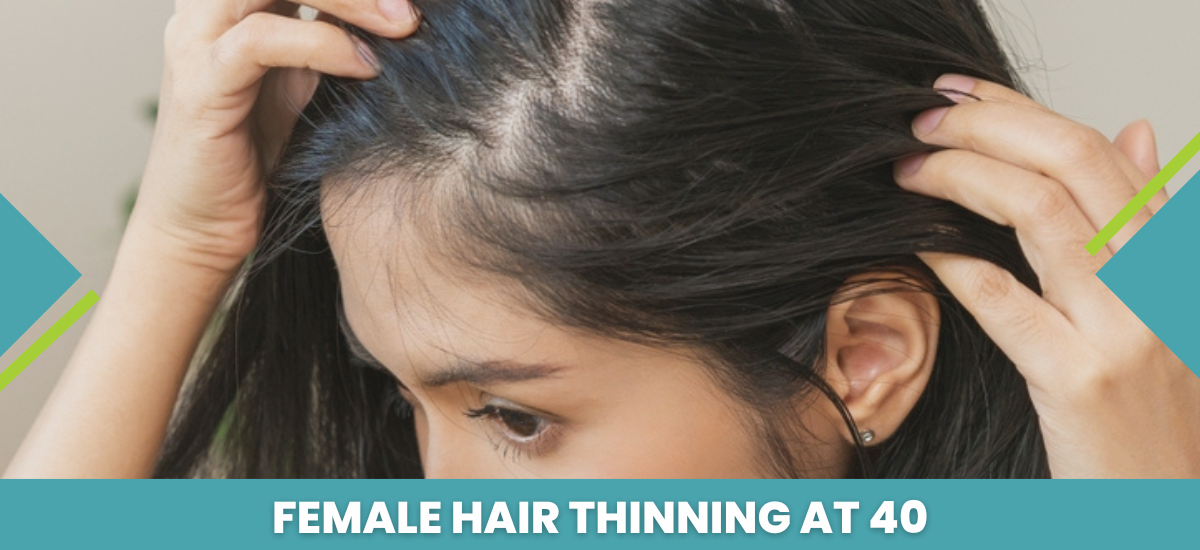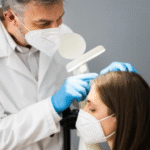
Hair is more than just strands; it’s a reflection of our health, confidence, and personal style. However, many women notice subtle changes as they approach their 40s. Thinning hair can suddenly creep up, leading to a visible scalp, loss of volume, and emotional stress.
Dr. Deepesh Goyal, a renowned plastic surgeon in Jaipur, shares, “It’s crucial to recognize hair thinning early and take proactive steps. Most cases are manageable with timely intervention.” Female hair thinning at 40 is more common than you think, but with proper care, it doesn’t have to define you.
At Rejuvena Cosmo Care, Dr. Deepesh Goyal brings years of expertise in cosmetic and plastic surgery, providing individualized care for a wide range of aesthetic concerns, including female hair loss in 40s. Recognized as one of the best plastic surgery clinics in Jaipur, Rejuvena offers cutting-edge treatments designed to tackle hair thinning effectively.
Is Hair Thinning at 40 Normal?
 Yes, female hair thinning at 40 is quite common and, in many cases, completely normal. At this age, hormonal fluctuations, stress, and changes in lifestyle can lead to visible hair volume loss. Slowing down of the growth rate of hair is also responsible, which makes thinning more visible even if the actual hair loss is minimal.
Yes, female hair thinning at 40 is quite common and, in many cases, completely normal. At this age, hormonal fluctuations, stress, and changes in lifestyle can lead to visible hair volume loss. Slowing down of the growth rate of hair is also responsible, which makes thinning more visible even if the actual hair loss is minimal.
However, “normal” doesn’t mean it should be ignored. Seeking early advice can prevent further loss and even reverse some thinning. With expert intervention, you can regain confidence and healthier hair.
Why Does Hair Start Thinning Around 40?

Hormonal Changes
Perimenopause brings fluctuating estrogen and progesterone levels, which can thin hair and increase shedding.
Genetic Factors
If your family has a history of female pattern baldness, thinning hair in your 40s might be part of your genetic blueprint.
Stress and Lifestyle
Chronic stress may shorten the growth phase of hair and lead to excessive hair loss. Inadequate diet and sleep only aggravate the problem.
Medical Conditions
Thyroid conditions, anemia, and autoimmune disorders are often diagnosed during this age and can impact hair health.
Hair Styling Damage
Decades of coloring, straightening, or tight styles can cause hair shafts to become weakened, leading to breakage and thinner-looking hair.
Medications
Certain medications like antidepressants, blood pressure drugs, and hormone treatments may list hair thinning as a side effect.
Types of Female Hair Loss Seen in the 40s
Androgenetic Alopecia
A genetic condition causing hair to thin primarily on the crown and part line.
Telogen Effluvium
Temporary shedding due to stress, surgery, or illness, making hair appear thin but recoverable.
Alopecia Areata
An autoimmune condition causing patchy bald spots on the scalp.
Traction Alopecia
Hair loss from years of tight ponytails, braids, or hair extensions.
Scarring Alopecia
Rare but serious, it involves permanent hair loss due to inflammation destroying hair follicles.
Treatment Options for Female Hair Thinning

Topical Minoxidil (Rogaine)
An FDA-approved solution is applied directly to the scalp. It helps reactivate hair follicles and encourages regrowth over time.
Platelet-Rich Plasma (PRP) Therapy:
Involves injecting platelet-rich plasma from your own blood into the scalp to stimulate inactive hair follicles and promote new growth.
Oral Medications:
Drugs like spironolactone or finasteride may be prescribed to balance hormones and reduce hair loss caused by androgen sensitivity.
Nutritional Supplements:
Supplements containing biotin, iron, zinc, and vitamin D support healthy hair growth from within by fixing deficiencies.
Low-Level Laser Therapy (LLLT):
A non-invasive treatment using red light stimulates scalp circulation and improves hair follicle activity.
Hormonal Therapy:
For women with hormone-related hair loss, hormone replacement therapy (HRT) or oral contraceptives may help stabilize hair fall.
Hair Transplant:
Involves relocating hair follicles from thicker areas to thinning spots. It’s an effective, long-term solution for advanced hair loss.
Myths Women Still Believe About Hair Thinning

Myth#1:
Only men experience significant hair thinning.
Reality:
Female hair loss in 40s is relatively common and often under-discussed.
Myth#2:
Washing hair too often causes hair loss.
Reality:
Washing helps maintain a healthy scalp; it doesn’t cause hair thinning.
Myth#3:
Brushing 100 times a day stimulates growth.
Reality:
Over-brushing can damage hair and lead to breakage, worsening the issue.
Myth#4:
Hair loss is only hereditary from the mother’s side.
Reality:
Genetics from both sides of the family contribute to hair thinning patterns.
Myth#5:
Hair loss is irreversible.
Reality:
With expert intervention from a skilled professional, many cases are reversible.
When to See a Specialist
 Noticeable Volume Loss:
Noticeable Volume Loss:
If ponytails feel thinner or you see scalp peeking through, it’s time to act.
Sudden Excessive Shedding:
Losing more than 100 strands per day consistently needs evaluation.
Bald Patches:
Any localized bald spots require immediate attention from a specialist.
Unexplained Hair Changes:
Changes without clear causes (like illness or stress) warrant deeper medical investigation.
Emotional Distress:
If hair loss is affecting your self-esteem, visiting a specialist can bring relief and solutions.
Conclusion
Frequently Asked Questions
Is hair thinning at 40 common among women?
What are the early signs of hair thinning in women?
Can changes in hormones result in hair loss at 40?
Is thinning of hair during the 40s reversible?
Depending upon the cause, timely intervention can effectively restore hair thickness in most instances.
Can styling or coloring be a cause of hair loss?
Disclaimer: This page is for informational purposes and not for promotional use.


